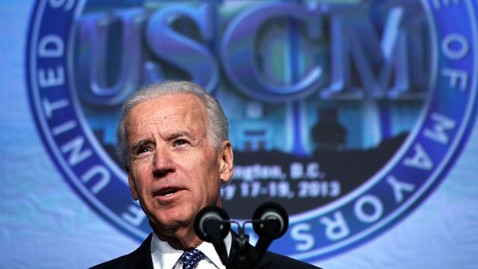Here we go again. The weather's going to extremes: a snowstorm in Jerusalem, wildfires in Australia, a cold snap in China, a heat wave in Brazil. Based on the first two weeks of the new year, 2013's picking up right where 2012 left off.
(What's up with the weather? Read the September 2012 National Geographic story and see a gallery of extreme weather pictures.)
As much as 8 inches (20 centimeters) of snow fell on Jerusalem (map) last Thursday, closing roads across the city. It was the biggest winter storm there in 20 years. Scores of trees fell from the weight of the snow, snowball fights broke out in the parks, and Israeli President Shimon Peres was photographed building a snowman outside his residence with help from his bodyguards.
In Australia, where a heat wave was smashing records across the country, the national weather agency added two new colors to its maps to handle the possibility of unprecedented temperatures: deep purple for above 122°F (50°C) and pink for above 125.5°F (52°C). The first eight days of the year were among the warmest on record, with January 7 ranking as Australia's hottest day ever, with an average temperature of 104.6°F (40°C). Some beaches were so hot swimmers couldn't walk to the water without burning their feet on the sand.
Elsewhere around the globe, the weather has been equally extreme. While much of the eastern U.S. and northern Europe basked in springlike weather, Tokyo (map) saw 3 inches (7.6 centimeters) of snow fall on the city this weekend, nearly half of its typical total for a full year.
In China, the average temperature fell to 25°F (-4°C) in early January, the lowest in nearly three decades. More than a thousand ships in China's Laizhou Bay (map) have been frozen into the ice.
At the same time, a heat wave and drought in northeast Brazil prompted officials to consider rationing electricity for the first time in a decade, and the temperature in Rio de Janeiro (map) reached a record 109.8°F (43°C).
The New Normal
Extremes like these are becoming the norm, a team of 240 U.S. scientists warned in a draft report released Friday. In an open letter to the American people, the authors of the latest National Climate Assessment said that the frequency and duration of extreme conditions are clear signs of a changing climate.
"Summers are longer and hotter, and periods of extreme heat last longer than any living American has experienced," they wrote. "Winters are generally shorter and warmer. Rain comes in heavier downpours, though in many regions there are longer dry spells in between."
The impacts of such changes are easy to see, they added. "Corn producers in Iowa, oyster growers in Washington State, and maple syrup producers in Vermont have observed changes in their local climate that are outside of their experience. So, too, have coastal planners from Florida to Maine, water managers in the arid Southwest and parts of the Southeast, and Native Americans on tribal lands across the nation."
Their report followed by a week the announcement by NOAA's National Climatic Data Center that 2012 ranked as the warmest year on record for the lower 48 states. Across the nation, more than 99 million people sweltered in temperatures above 100°F (38°C) for more than ten days. The average temperature last year was more than three degrees higher than the average for the 20th century.
On top of all the heat waves, the nation suffered 11 disasters with damages of at least $1 billion each, including the severe drought across the Midwest and superstorm Sandy along the East Coast. (See top reader photos of superstorm Sandy.)
Rough Waters Ahead
In another troubling sign of a changing climate, the amount of ice covering the Arctic Ocean shrank to its lowest level ever in late 2012. Nearly half of the ocean was free of ice in mid-September, the National Snow and Ice Data Center reported. Some scientists have speculated that the warming ocean is changing the pattern of the jet stream over the Arctic, increasing the likelihood of extreme weather for lower latitudes. (Related: "Polar Ice Sheets Shrinking Worldwide, Study Confirms.")
Even with all this weird weather, things could have been even worse if El Niño conditions had developed this winter, as many experts had predicted. During an El Niño phase, the pattern of storms across the Pacific typically increases the amount of warm, dry weather that reaches places like Australia, leading to severe drought or extended heat waves.
But last November, the anticipated El Niño fizzled out. If it hadn't, the Australian heat could have been even worse. "The fact that we have neutral El Niño conditions this year is helping to keep things less extreme than they might be otherwise," said meteorologist Jeff Masters of Weather Underground.
Looking ahead to the spring, Masters cautioned that the U.S. may be in for still more extreme weather. "The great drought of 2012 is now a two-year drought," he said, referring to the record-breaking dry spell that wiped out crops across the Midwest last summer. "If we come into spring with drought conditions as widespread and intense as they are now, we're at high risk of another summer of extreme drought, which could cost tens of billions of dollars—again." (Pictures: Surprising Effects of the U.S. Drought.)











